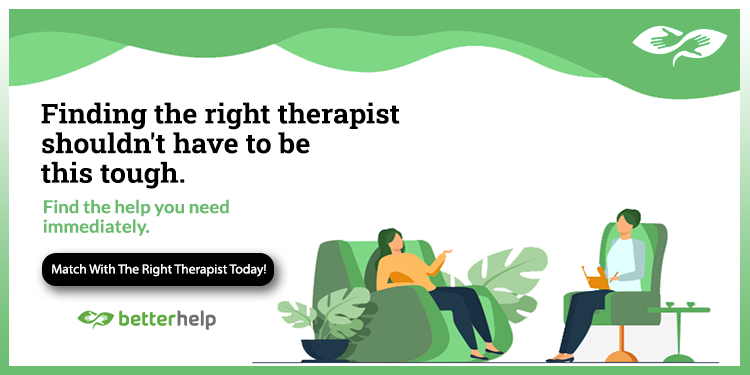Brutal honesty. In a world where social niceties, diplomatic phrasing, and careful self-censorship often prevail, there exists a transformative force that many find both terrifying and liberating: brutal honesty. From a Gestalt therapy and Somatic Experiencing perspective, this raw, unfiltered truth-telling represents not merely communication but a profound pathway to psychological healing, authentic connection, and embodied presence.
What Is Brutal Honesty?
Brutal honesty is not cruelty disguised as candor or tactlessness masquerading as authenticity. Rather, it is the courageous practice of speaking and living truth without the cushioning layers of denial, minimization, or people-pleasing that so often characterize our interactions. It involves:
Naming what is actually present in our experience, even when uncomfortable Acknowledging painful realities without defensive distortion
Expressing authentic feelings and needs without manipulation
Speaking directly about what we observe in others when it serves growth Living congruently with our inner truth rather than external expectations
This practice stands in stark contrast to the “white lies,” strategic omissions, and self-deceptions that permeate much of daily life. While these milder distortions of truth may temporarily reduce friction, they exact a profound toll on psychological and somatic wellbeing.
The Somatic Cost of Dishonesty
From a Somatic Experiencing viewpoint, every untruth creates dysregulation in our nervous system. When we lie—whether to others or ourselves—our bodies register the incongruence. This manifests as subtle tension patterns: perhaps a tightness in the throat, a constriction in the chest, or a subtle holding in the abdomen. These physical responses reflect our organism’s recognition of misalignment between internal experience and external expression.
Over time, these small somatic compromises accumulate. The body devotes increasing resources to maintaining these patterns of containment, leading to chronic tension, reduced resilience, and diminished capacity for presence. Essentially, lying requires physical effort—the effort of suppression and constriction.
Consider what happens physiologically when you tell a social lie. Your respiratory pattern likely shifts toward shallower breathing. Subtle facial tensions may emerge as you manage your expression. Your heart rate typically increases slightly. These are all stress responses that, when chronically activated, contribute to systemic dysregulation.
Brutal honesty, by contrast, allows the body to release these patterns of constriction. When expression aligns with experience, the system can return to regulation and flow. This is why moments of speaking long-held truths often bring profound physical relief—sighs, tears, laughter, and a palpable sense of energetic release.

Psychological Benefits of Brutal Honesty
1. Integration and Wholeness
In Gestalt therapy, psychological health is characterized by integration—the harmonious functioning of all aspects of self. When we compartmentalize or deny certain thoughts, feelings, or needs to maintain a socially acceptable facade, we create fragmentation. Parts of ourselves become alienated from consciousness, operating underground where they often generate symptoms and sabotage our intentions.
Brutal honesty promotes integration by bringing these split-off aspects into awareness and expression. As we acknowledge previously disowned truths—about our desires, resentments, fears, or power—these elements can be reincorporated into our conscious identity. This integration results in greater coherence, reduced internal conflict, and expanded access to our full capacities.
2. Authentic Contact
Gestalt therapy emphasizes the importance of contact—the meeting at the boundary between self and other that allows for genuine exchange and growth. When we filter our communication through layers of self-protection and social conditioning, this contact becomes diluted and superficial. We may be physically present but emotionally absent, exchanging pleasantries while our true selves remain hidden.
Brutal honesty creates the conditions for authentic contact. When we reveal ourselves truthfully and receive others’ truths without defensive distortion, we experience the exhilaration of real meeting. These
moments of genuine contact—whether they involve sharing vulnerability, expressing appreciation, or confronting painful realities—constitute the most meaningful and transformative aspects of human relationship.
3. Enhanced Agency and Empowerment
Living truthfully cultivates a sense of personal agency. When we habitually compromise our truth to accommodate others or avoid discomfort, we reinforce a self-concept based on adaptability rather than authenticity. Over time, this erodes our sense of internal authority and decisiveness.
Practicing brutal honesty reverses this pattern. Each act of truthful expression strengthens our connection to our inner compass and builds confidence in our capacity to navigate life from this centered place.
Rather than being blown about by others’ expectations or our fear of disapproval, we develop the ability
to stand firmly in our truth while remaining open to genuine dialogue.
Suicidal thoughts – how to calm them down
When Brutal Honesty Serves Growth
It’s important to distinguish between brutal honesty that serves growth and communication that merely vents or harms. Not every truth needs expression, and timing matters significantly. The key question becomes: Does this expression serve greater awareness, integration, or authentic connection?
Brutal honesty serves growth when:
It names currently unacknowledged dynamics that block development It expresses authentic feelings that create greater intimacy when shared It confronts patterns of avoidance or denial that maintain dysfunction
It clarifies boundaries and needs that allow for more authentic relationship It acknowledges mistakes or limitations that require attention for progress
Conversely, brutal honesty becomes counterproductive when it’s motivated primarily by aggression, self- righteousness, or the desire to wound. The difference often lies not in the content but in the underlying intention and the presence or absence of fundamental respect for self and other.
Practicing Brutal Honesty: Three Exercises
Exercise 1: The Body Scan for Truth
This practice helps identify where and how you might be holding untruths in your physical system.
- Find a quiet space where you can be undisturbed for 15-20 Sit or lie in a comfortable position.
- Begin with several deep breaths, allowing your attention to settle into your
- Slowly scan from the top of your head down to your feet, pausing at each area of your
- At each area, ask: “What truth am I holding back or denying in my life right now?” Notice any sensations that arise—tension, tingling, constriction,
- When you identify a sensation, stay with Breathe into that area and gently ask: “What are you trying to tell me? What truth wants expression?”
- Without forcing, allow words, images, or sensations to Simply note what arises without judgment.
- For each truth that emerges, consider: What would it mean to express this? What fears arise around its expression? What might become possible if this truth were acknowledged?
- Complete the practice by thanking your body for its wisdom and setting an intention for one small step toward greater truthfulness.
Practice this scan weekly, noting patterns in where and how your body holds unexpressed truths.
Exercise 2: Graduated Truth-Telling
This exercise helps build capacity for honest expression through progressive practice.
- Create a “truth hierarchy”—a list of ten truths you find difficult to express, arranged from least to most challenging.
- Begin with the easiest item on your Identify one person with whom you could share this truth in the coming week.
- Before the conversation, prepare by:
Clarifying your intention (Why is expressing this important?) Acknowledging your fears (What’s the worst that could happen?) Grounding yourself through breath and presence
- Express your truth simply and directly, without lengthy justifications or
- Notice both your internal experience during the expression and the actual response you
- Afterward, reflect: What happened in your body during this truth-telling? How did reality compare with your fears? What did you learn?
- When you feel ready, move to the next item on your
This graduated approach builds confidence and capacity while providing concrete evidence that often contradicts catastrophic fears about honest expression.
Exercise 3: The Empty Chair Truth Dialogue
This Gestalt technique helps explore and resolve the internal conflicts that often surround truth-telling.
- Arrange two chairs facing each Designate one as the “truth-telling self” and the other as the “protective self” that maintains silence or softens truths.
- Sit in the truth-telling chair Speak about a specific truth you’ve been holding back and why expressing it matters to you. Notice any emotions and sensations that arise.
- Move to the protective Speak from the perspective of the part that resists this expression. What is this part trying to protect you from? Acknowledge its positive intention.
- Continue the dialogue, moving between chairs as Allow both perspectives full expression without rushing to resolution.
- As the dialogue deepens, look for a “both/and” integration: How might you honor both the need for truth and the legitimate concerns about its expression?
- Conclude with a specific commitment that honors the wisdom of both parts—perhaps expressing the truth in a particular context, with certain boundaries, or after specific
This dialogue often reveals that our internal resistance to honesty comes not from weakness but from legitimate protective impulses that deserve acknowledgment even as we move toward greater truthfulness.
The Paradoxical Path: Gentleness in Brutal Honesty
Perhaps the most profound insight about brutal honesty comes through paradox: True brutal honesty, when practiced with awareness, contains both unflinching clarity and profound compassion. It is “brutal” not in its harshness but in its refusal to flinch from reality, and the most powerful truth-telling often manifests with remarkable gentleness.
This integration of clarity and compassion reflects psychological maturity. We need not choose between truthfulness and kindness—at their deepest level, they are aspects of the same movement toward wholeness. The practice of brutal honesty ultimately teaches us that the most profound truth includes both clear seeing and open-hearted presence with what is seen.
As we develop capacity for this integrated honesty, we discover that what we once feared—exposure, rejection, conflict—often gives way to unexpected gifts: deeper connection, enhanced creativity, and the quiet strength that comes from living in alignment with our deepest truth.
Keywords: Brutal honesty, polyvagal theory, gestalt therapy, psychotherapy, parents, parental trauma, somatic experiencing, Licensed therapist near me in Manhattan NYC, Affordable therapy services in New York State, Holistic psychotherapy sessions in NYC, Somatic Experiencing therapy for trauma recovery in New York City, NARM therapy in Brooklyn, Licensed couples therapy in Manhattan, Gestalt therapy near me in NYC, Marriage counseling in Queens NYC, Therapy for anxiety treatment in NYC, Experienced psychotherapist in New York, Licensed psychotherapist near me in NYC, Somatic Experiencing therapy sessions in New York, Trauma therapy and counseling in Manhattan, Gestalt therapy sessions in New York City, Therapy sessions for emotional regulation in New York, Trauma therapy near me in Brooklyn New York, Licensed mental health therapist in Manhattan NYC, Depression therapy in New York, New York City therapist experienced in PTSD treatment
Contact us: Feel and Heal Therapy Office
For companies: Creative Manager
What do you say hello later?








